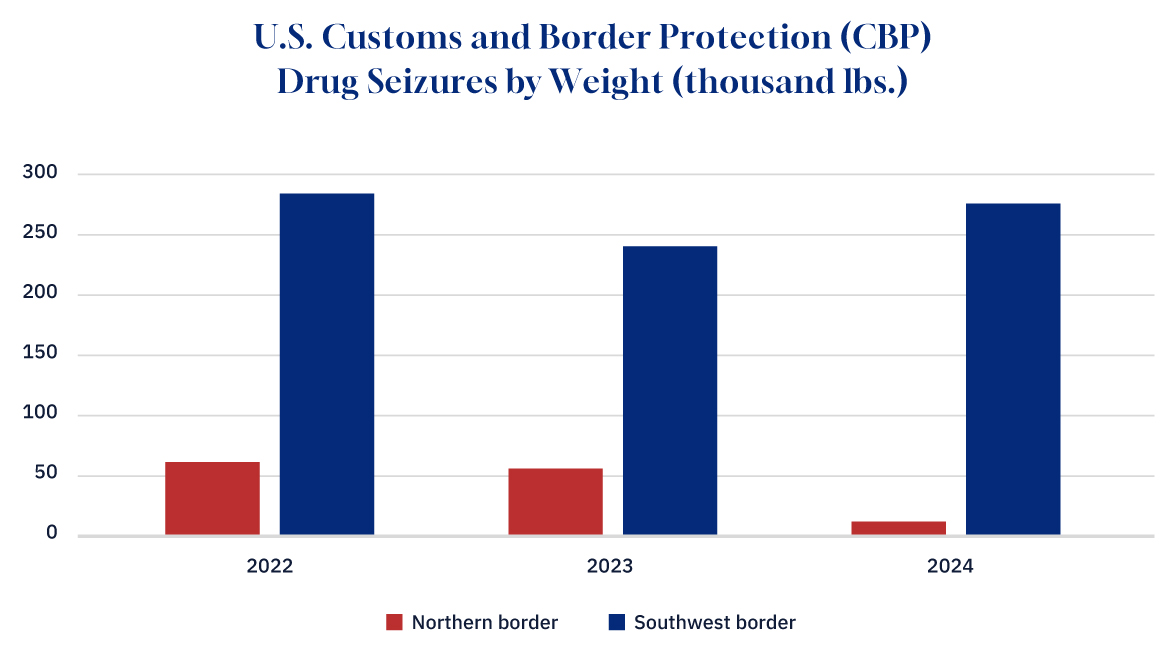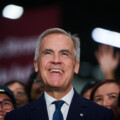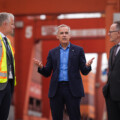Welcome to Need to Know, The Hub’s roundup of experts and insiders providing insights into the developments Canadians need to be keeping an eye on.
Today’s weekend edition dives into thought-provoking research from think tanks, academics, and leading policy thinkers in Canada and around the world. Here’s what’s got us thinking this week.
It’s tariff day. As you read this, President Trump may or may not have levied 25 percent across-the-board tariffs on Canada. If he has, Canada is in the midst of a genuine crisis without a sitting Parliament to debate our response. If he hasn’t, then we’re all collectively left in purgatory trying to figure out will he or won’t he, monitoring social media for the latest presidential declaration.
Nevertheless, it’s still unclear whether the rhetoric coming out of Trump and his officials is simply posturing with the goal of making deals, or if they actually believe what they say. If it’s the latter, we should be quite concerned because their rhetoric on Canada is often far from reality.
Trump becomes a “Davos Man”
Despite President Trump’s consistent railing against the World Economic Forum (WEF), an elite talk shop that is the foil of many conspiracy theories, last week he joined the club.
Last Thursday, in a virtual address at the WEF’s annual meeting in Davos, Trump outlined his administration’s immediate steps in addressing what he described as an economic crisis inherited from his predecessor. Trump blamed Biden’s policies—specifically, $8 trillion in deficit spending, strict energy regulations, and an expansive regulatory agenda—for fueling high inflation and soaring interest rates.
Indefensible
Notable for Canada, NATO was also in his crosshairs.
“[The U.S. is] moving quickly to bring back strength and peace and stability abroad. I’m also going to ask all NATO nations to increase defence spending to 5 percent of GDP, which is what it should have been years ago. It was only at 2 percent, and most nations didn’t pay until I came along,” he said.
“I insisted that they pay, and they did because the United States was really paying the difference at that time and it was unfair to the United States.”
Of all of Trump’s gripes about Canada, his criticisms of Canada’s paltry defence spending are fair. Canada doesn’t meet its NATO spending obligations. Despite commitments from the government that we’ll meet our obligations in the future, how we credibly get there remains unclear.
The Parliamentary Budget Officer (PBO) has estimated that to meet our NATO spending commitments using the government’s previous timeline of 2032-32, defence spending would need to rise from $41 billion in 2024-25 to $81.9 billion by 2032-33, nearly doubling. And that’s just to make the 2 percent commitment, which is quickly becoming the spending floor for NATO members. The Liberals now claim they can meet the goal by 2027. In 2024, NATO estimated that 23 out of 32 members would meet their 2 percent commitments.
Using the PBO’s forecast of our GDP in 2024-25, if the NATO commitment moved to 5 percent of GDP (per Trump’s blustering), Canada would need to spend $151.7 billion to meet its obligations.
While it’s unlikely that such an increase in commitments will come to pass, not even the U.S. or any NATO member spends this much, what is clear is that the age of Canadian free-riding has come to an end. It’s time to get serious about our defence spending or face the consequences.
Trump’s pick for Commerce Secretary says tariff threat concerns drugs and immigration, not trade
Trump’s pick for secretary of commerce, Howard Lutnick, had his confirmation hearing this week, and Canada featured prominently. When asked to justify Trump’s tariff threats on Canada and Mexico, he explained that illegal migration and fentanyl trafficking, which he claims is killing “over 100,000 Americans,” are the most pressing issues for American border security. He stated that he supports President Trump’s use of tariffs as a pressure tactic to force Mexico and Canada to secure their borders and stop the flow of fentanyl, emphasizing that this is a policy-driven action rather than a traditional trade tariff.
Lutnick emphasized that “to create action from Mexico and action from Canada, and as far as I know, they are acting swiftly, and if they execute it, there will be no tariff. And if they don’t, then they will be. It is an action-oriented model.”
This quote reveals a lot about how some in the Trump administration think about tariffs. For Lutnick, it appears this bout of tariff threats is more about negotiating rather than a belief that there are legitimate economic benefits to the U.S. from tariffing its top two trading partners. We can also understand this quote to mean that if Canada acts on border security, which there has been some movement on, it may be possible to avoid the punitive tariffs.
The challenge for Canada will be convincing the Trump administration that it’s stemming the flow of drugs across the northern border when it appears that minuscule amounts are flowing in the first place. Especially relative to the southern border. Using data from the U.S. Customs and Border Protection, the volume of drug seizures at the Mexican border dwarfs that of Canada.

Graphic credit: Janice Nelson.
Last year, only 11,600 pounds of drugs were seized along the northern border, while 275,000 pounds were seized at the southern border. This is more than 20 times greater than what was seized up north.
While the northern numbers may be under-representative of cross-border drug flows given how much of the border is unguarded, it’s unlikely that accounting for what’s missed would amount to anything close to what is coming over the Mexican border. The same goes for human trafficking and illegal migration.
This doesn’t mean that Canada shouldn’t increase its border security. It should, but not just to appease Trump.
Canada should beef up efforts to secure its border to stop a separate cross-border criminal problem—the flow of U.S. guns into Canadian cities. While data on the amount of illegal American guns coming into Canada is difficult to come by, one estimate from 2023 is that when police in Ontario traced the origin of recovered handguns used in violent crimes, 90 percent were found to have originated in the U.S.
If Canada is going to work with its southern neighbour to stem the flow of drugs and people headed to the U.S., then American authorities need to work with Canada to curtail weapons trafficking northward.
Tariffs may be a negotiating tactic. That’s fine. But let’s then negotiate an agreement on border security that is beneficial to both countries.










